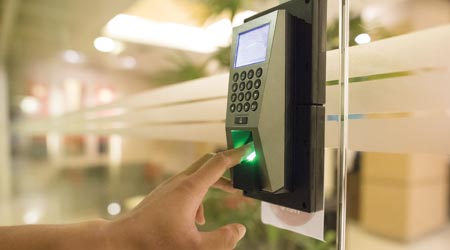Access Control: Strategies and Tactics For Successful Upgrades
Effective upgrades of door hardware and security technology requires understanding options and making smart specification decisions
Effective control and monitoring of door locks serve a fundamental role in any organization’s safety and security plan. The toughest challenge for maintenance and engineering managers is avoiding common problems when upgrading security and access control systems in an effort to improve the protection of occupants and assets from inside and outside threats.
Areas of improvement
Before beginning a security and access control upgrade, managers need to meet with key stakeholders in the process to establish well-defined goals. User groups, key maintenance personnel, security, information technology, consulting engineers and management all need to be part of the discussion that addresses the costs, inconvenience, and potential changes in operational procedures.
Common goals for any upgrade should include an increase in functionality, features and flexibility. Beyond these goals, managers specifying products and planning upgrades should look for reductions in these key areas:
Vulnerability. Reducing vulnerability means reducing exposure to the possibility of being successfully attacked. Upgrades should include the incorporation of smart access credentials to replace legacy proximity card credentials that can be replicated easily. This step usually necessitates the replacement of all card readers. If a facility has never installed access control technology, moving to such a system reduces the potential for unauthorized key duplication while allowing managers to identify people used a particular door and at what times.
Operational costs. Battery-operated, wireless locksets with integral card readers reduce initial installation costs, but batteries require replacement, resulting in ongoing material and labor costs. Wireless locksets generally introduce additional complexity and points of potential failure.
When specifying new equipment, managers need to ask for the operational life expectancy to determine the annualized installation cost. When deployed using lock-and-door position sensing, access control systems can reduce the need for security staff to check doors, thus reducing labor costs.
Training needs. Intuitive graphical user interfaces with alarm handling automation can greatly reduce training for most users. Ask manufacturers for software demonstrations, and allow staff access to those demonstration stations. Give them a task to complete with no training and see how long it takes to complete the task. The benefits of intuitive interfaces will be apparent. Identify how many of your operational, maintenance, and IT staff will require training and include this in the project’s soft costs.
Maintenance tasks. The first step in reducing maintenance tasks is to understand routine maintenance the chosen system requires, the life expectancy of the components, and whether the system can report lock and door cycles to assist with predictive maintenance.
Can technicians monitor power supplies and backup batteries for health? How often do batteries require replacement? How robust is the hardware? Will the system generate texts or emails to staff when an anomaly is detected?
Managers also need to get clear definitions and estimate the time technicians will spend maintaining the system. Including this information in the system’s cost to operate can be helpful when comparing the desirability of different systems or bids.
Downtime, false alarms and complacency. Any system that is not reliable creates an environment with a weakened security culture. Valid alarms are indistinguishable from false alarms, so as more false alarms occur, staff attentiveness diminishes, as does policy execution. The new system should have minimal downtime and false alarms.
Related Topics:














